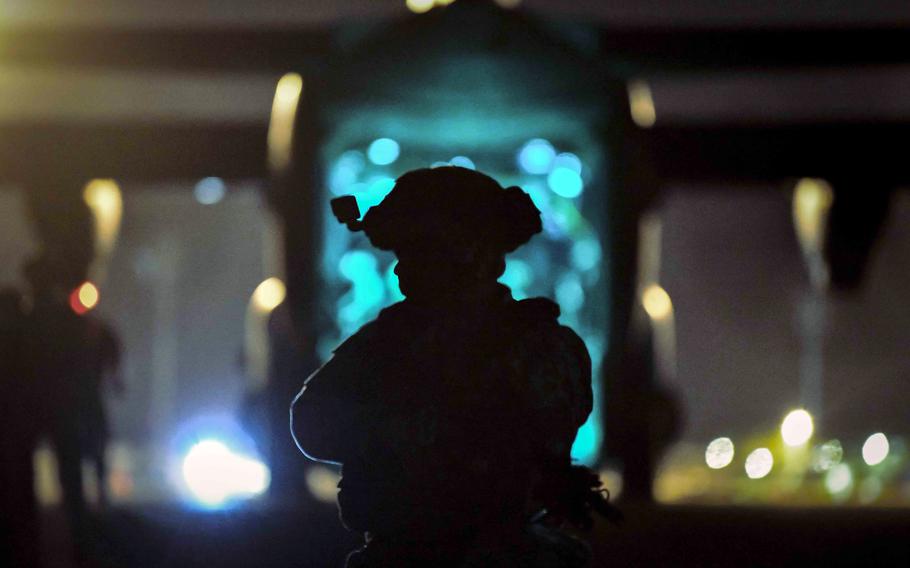
A Philippine service member trains during a Balikatan drill in Subic, Philippines, April 25, 2024. (Ernesto Lagunes/U.S. Marine Corps)
The Philippines took delivery of a Japanese-made mobile air-surveillance radar this week amid ongoing tensions with China over contested territory in the South China Sea.
The TPS-P14ME will expand the Philippines’ “domain awareness” capabilities, Department of National Defense Secretary Gilberto Teodoro said during a handover ceremony at Camp Aguinaldo, Quezon City, the state-run Philippine News Agency reported Monday.
“It adds to our scope of domain awareness particularly in the aerial domain,” he said. “We will be having more eyes or surveillance capabilities.”
The delivery comes during the annual Balikatan, or “shoulder-to-shoulder,” exercise, which this year involves 16,000 mostly American and Filipino troops. Training began in the islands April 22 and runs until May 10.
The exercise was briefly disrupted Monday when the Chinese intelligence ship Tianwangxing moved into the training area in the South China Sea, forcing the landing ship dock USS Harpers Ferry to abort a live-fire drill, according to local reports.
The next day, a China coast guard ship with water cannons damaged one of two Philippine coast guard vessels at Scarborough Shoal, a feature inside the Philippines’ exclusive economic zone but controlled by China, according to a report that day by Reuters news agency.
An escalating number of similar encounters have occurred between the two at Second Thomas Shoal, a feature in the South China Sea controlled by the Philippines about 400 miles south of Scarborough Shoal.
The Philippines’ new radar is part of a more than $95 million deal with Japan’s Mitsubishi Electric Co. that includes three fixed FPS-3ME air surveillance radar systems, Japan’s Ministry of Defense said when the deal was signed in August 2020.
One was installed at Wallace Air Station in San Fernando, La Union, in December 2023. The others are expected to be delivered within the next two years, the news agency reported.
The TPS-P14ME radar is capable of high-resolution surveillance of air and surface targets, including aircraft, drones, maritime vessels, enabling us to track and identify potential threats with precision and accuracy, according to the Philippine News Agency. It has a range of 250 nautical miles.
“These are Armed Forces radars,” Teodoro said. “We will integrate them within our system and we will devise a method where we can operate with them when necessary.”
The new mobile radar “is a critical component of our surveillance and early warning capability,” Philippines air force chief Lt. Gen. Stephen Parreño said Monday, according to the news agency.
The radar is simple and energy efficient, he added.
“It will play a significant role in bolstering the (Philippine air force’s) capabilities in maintaining situational awareness in our airspace, ensuring that we maintain a watchful eye on the horizon for potential threats anytime, anywhere, crucial in light of an ever-changing geopolitical landscape in the region,” he said.